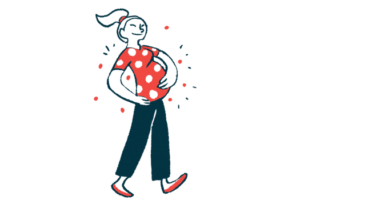How I navigate the symptoms of PNH and aplastic anemia
I've learned that listening to my body is crucial

In past columns, I’ve stated that I live with both aplastic anemia and paroxysmal nocturnal hemoglobinuria (PNH). Today I want to explain how I navigate these two rare blood disorders simultaneously.
In 2009, I was diagnosed with aplastic anemia, a condition in which the bone marrow doesn’t produce enough blood cells. I went into remission a year later, following treatment, and began rebuilding my life.
In 2016, during a routine six-month checkup with an oncologist, I discovered I was no longer in remission. My doctor explained that my red blood cell, white blood cell, hemoglobin, and other blood counts were low. Because I was her only hematology patient, she did some research to learn more about my blood disorder.
In her research, she found that some aplastic anemia patients are also diagnosed with PNH. The AA and MDS International Foundation explains:
“Having aplastic anemia is the only known risk factor for developing PNH. More than 10 out of every 100 people with aplastic anemia will develop PNH. In addition, some people with PNH will develop aplastic anemia. People with PNH can share symptoms with aplastic anemia patients, such as low blood cell counts.”
My doctor then performed a flow cytometry test to determine if I also had PNH. The results revealed that I was indeed battling two blood disorders, not just one.
Listening to my body
In navigating my blood disorders, I’ve learned to listen to my body and take note of my symptoms. Aplastic anemia symptoms may include headaches, nosebleeds, dizziness, fatigue, bruising, bleeding gums, blood in stool, and shortness of breath. Some symptoms of PNH overlap, such as fatigue and shortness of breath. Other common PNH symptoms include blood in the urine, trouble swallowing, abdominal pain, and blood clotting problems.
When I experience any of these issues, I write down the symptom, date, and time it appeared.
Just the other day, I experienced a light nosebleed, which I noted on my phone. I hadn’t experienced any other symptoms in recent weeks, so I felt OK not scheduling an urgent doctor visit. But the note on my phone will be important for my next checkup, when my doctor asks how often I experience symptoms.
As I’m now 16 years into my health journey, I feel comfortable not rushing to the doctor with every mild symptom, but that can be different for everyone.
Learning more
Even after all these years, there’s still much to learn about my blood disorders. I’m signed up with the AA and MDS International Foundation to receive updates on PNH and aplastic anemia. These emails help me learn more about new drugs on the market or ways to get connected with my community.
I also have regular conversations with my doctor to stay informed about treatment options for both disorders.
If you battle two blood disorders, let me know in the comments below how you navigate them both.
Note: PNH News is strictly a news and information website about the disease. It does not provide medical advice, diagnosis, or treatment. This content is not intended to be a substitute for professional medical advice, diagnosis, or treatment. Always seek the advice of your physician or other qualified health provider with any questions you may have regarding a medical condition. Never disregard professional medical advice or delay in seeking it because of something you have read on this website. The opinions expressed in this column are not those of PNH News or its parent company, Bionews, and are intended to spark discussion about issues pertaining to paroxysmal nocturnal hemoglobinuria.









Leave a comment
Fill in the required fields to post. Your email address will not be published.